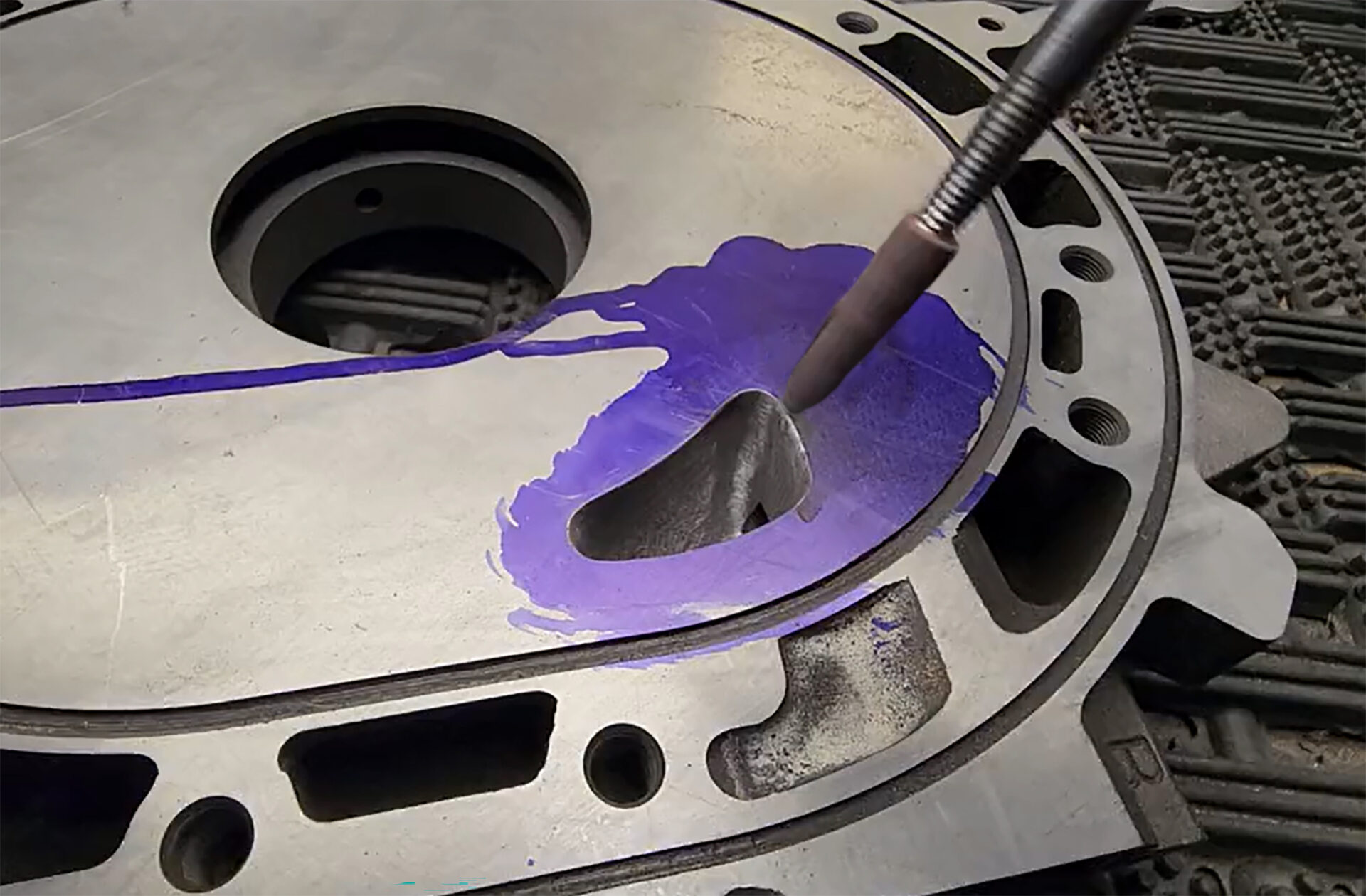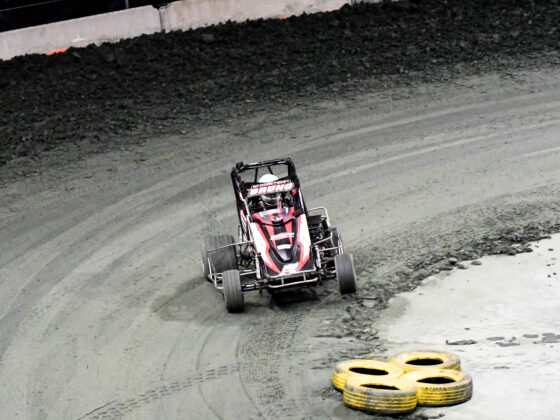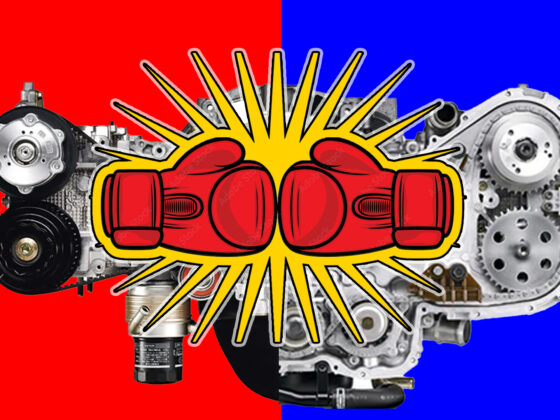 Increasing airflow and power can be achieved through different types of porting on a rotary engine. Each type has their own benefits and drawbacks, but there is a lot of variability in how a given port job is done. We are going to use a Bridgeport and Semi Peripheral Port job on our turbocharged 13B REW biased towards minimizing increased overlap, which will give us a wide powerband that extends well above the stock 8,000rpm redline.
Increasing airflow and power can be achieved through different types of porting on a rotary engine. Each type has their own benefits and drawbacks, but there is a lot of variability in how a given port job is done. We are going to use a Bridgeport and Semi Peripheral Port job on our turbocharged 13B REW biased towards minimizing increased overlap, which will give us a wide powerband that extends well above the stock 8,000rpm redline.
All engines are essentially air pumps and it is the top-end of an engine that makes all of the power. Porting an engine is paramount in terms of the characteristic of an engine, it’s powerband, drivability, and power potential. The dimensions and shape of the ducting in the ports of the head and the manifolds have the highest order of importance when making power because it’s the major system that puts air into the engine and exhaust gasses out. This makes the ports and ducting critical for an engine and when done properly, an engine can achieve a Volumetric Efficiency (“VE”) approaching 130% naturally aspirated.
 The Wankel engine is essentially a 2-stroke from the standpoint of lacking intake and exhaust valves, requiring oil to be injected into the combustion chamber to lubricate the seals, and the intake and exhaust port shape, location and dimensions determining the timing, flow and power characteristics of the engine. However, it is quite unique from piston engines in many ways, notably having a 270* compression stroke vs 180* for a piston engine, meaning the e-shaft (crankshaft) of the rotary travels 90-degrees more during a compression stroke vs a piston engine.
The Wankel engine is essentially a 2-stroke from the standpoint of lacking intake and exhaust valves, requiring oil to be injected into the combustion chamber to lubricate the seals, and the intake and exhaust port shape, location and dimensions determining the timing, flow and power characteristics of the engine. However, it is quite unique from piston engines in many ways, notably having a 270* compression stroke vs 180* for a piston engine, meaning the e-shaft (crankshaft) of the rotary travels 90-degrees more during a compression stroke vs a piston engine.
Without valves and camshafts to adjust timing or overlap; modifying the ports of a rotary engine has a similar effect to changing the lift, duration, and timing of camshafts on a piston engine. This greatly affects everything from the drivability to the powerband and power potential of the engine.

Modifying the ports on a rotary engine to increase airflow will improve efficiency, power, and lower the boost required to make a given power level. Lowering the boost lowers the temperature of the intake charge, the intercooler does not have to work as hard, the air is denser, and all of this reduces chances for detonation and of course, makes more power.
 Changing the shape of the port affects timing, duration, and flow. The stock 13B REW in our FD has 3-degrees of Primary Port overlap with the exhaust, while the Secondary Port has 16-degrees of overlap: Note, the photo above is of an older 6-port 13B engine, while our 13B REW uses 1 port on each iron, totaling 4 ports)
Changing the shape of the port affects timing, duration, and flow. The stock 13B REW in our FD has 3-degrees of Primary Port overlap with the exhaust, while the Secondary Port has 16-degrees of overlap: Note, the photo above is of an older 6-port 13B engine, while our 13B REW uses 1 port on each iron, totaling 4 ports)
Primary Port:
Intake Open: 45° ATDC
Intake Closed: 50° ABDC
Secondary Port:
Intake Open: 32° ATDC
Intake Closed: 50° ABDC
Exhaust Port:
Exhaust Open: 75° BBDC
Exhaust Closed: 48° ATDC




19 comments
Great article and build. As a non-rotary guy, I haven’t seen any extreme power builds that are quiet. I would love to see a 4 rotor/3 rotor big build or even a 250hp NA build but actually be OEM quiet. Is it possible??
Thank you. We are shooting for over 600whp with this build while being as quiet and streetable as possible. We are going to use the largest mufflers currently on the market so stay tuned to see how quiet the setup will be.
Part of why a rotary is so loud is that there is no poppet valve to should the port so there is a lot stronger exhaust pulse coming out of the port.
ahhh that makes a lot of sense. cant wait for the rest of the build, especially the quiet part
The exhaust port also opens much quicker than a cam controlled exhaust port.
Fantastic article. I think I finally (sort of) understand all the different rotary porting types that I have read about for decades now. This engine is going to be killer!
In my opinion one of the best rotary tech references out there period.
Why wouldn’t you radius the edges of the port to enhance flow? Seems like a no-brainer to me.
Probably to avoid snagging a seal
I the young age of 14 in 1974 when USAC was using Ported Rotory engines for Competition use in their Sprint Cars .
As far as I know , I was one of VERY FEW duing this .
They were DEVASTATINGLY FAST & HAD A WORKING POWERBAND OF 7000-12000+ R.P.M.s .
The n they Outlawed them like they did with the 426 “HEMI”s
Some body talk!!! In PR we use that in the 80 and 90! En Puerto Rico nosotros usamos eso desde Los anos 1980, cuando Los motors con mas caballaje empezaron a romper Los housing en El area del pase del aceite Denison a la torcion del motor y tambien dependia de donde estaba agarrado El motor, Esto es para Los que trabajar I motors desde Los anos 1980! Pero tambien Les haciamos Algo a Los rotors que yo nunca e visto a nadie comentar!!! Que Tenga buen dia!
Translation:
“In Puerto Rico we used that since the 1980s, when the engines with more horsepower began to break the housing in the area of the Denison oil pass to the engine torque and also depended on where the engine was caught, this is for those who work I motors since the 1980s! But we also did Something to The Rotors that I’ve never seen anyone comment on!!! Have a good day!”
What did you do in the 80s and 90s? Porting?
What did you do to the rotors that you have not seen
Yes, the rear iron can crack resulting in a disastrous oil pressure loss and oil spraying all over the engine bay. There are some tricks to prevent this issue.
What did you do to the rotors that no one has commented on?
Thanks for the comment.
I had many talks involving regard’s too what port I wanted to use. No one explained it as well as this article. Half Bridge it is, I didn’t want to compromise on the lower RPM range whist still having a Brap
I’m glad to hear the article helped your understanding of different bridge ports. Just keep in mind the major takeaway of porting can vary greatly depending on who is doing the work. You can have an aggressive street port with worse low rpm performance than a mild, full bridge port. A half bridge probably be a good idea for your goals and would safeguard a little against a bad port job, but it’s worth it to have an experienced person do the porting.
The rotary engine is a breakthrough in engineering which was destroyed by pollution devices mandated by politicians normally aspirated engines are light and powerful and will last much longer then most high performance piston engines I still daily drive my 1988 RX7 which I streetported myself and enjoy the smooth idle and tork throughout the power band. This engine got a bad deal. And yes I get great mileag.
The Rotary Engine is a very unique engine
Seems like if you had some way to independently throttle an added peripheral port, you could get the best of both port styles. Has this been attempted?
Really excited to see this build evolve & article series, you’ve got a great team behind this build,
I was wondering if you considered other modern alternative to filling block water jacket for Periph. Port, people have had issues with epoxies, but is this due to incorrect choice of epoxy, prep., execution, etc.?
Here’s some info on alternatives
https://m.youtube.com/watch?v=Z9FBcSZruP8
https://m.youtube.com/watch?v=pnSdMd4XXzQ
https://m.youtube.com/watch?v=lRjCuvLCEbo
https://m.youtube.com/watch?v=SkTHNRqZDKc
https://m.youtube.com/watch?v=egU7I3V_Gv4
This is a awesome! Thanks for your guys for posting this. When I do my build I will fallow this one. I did work with CTP and WPC with the info from you guys on another project.